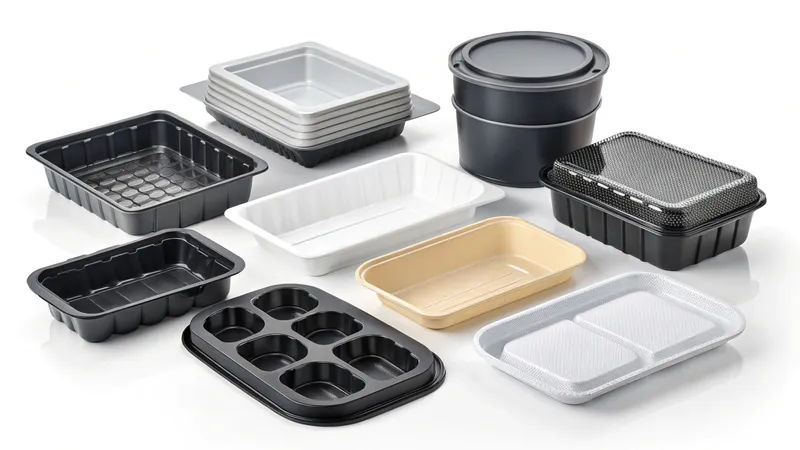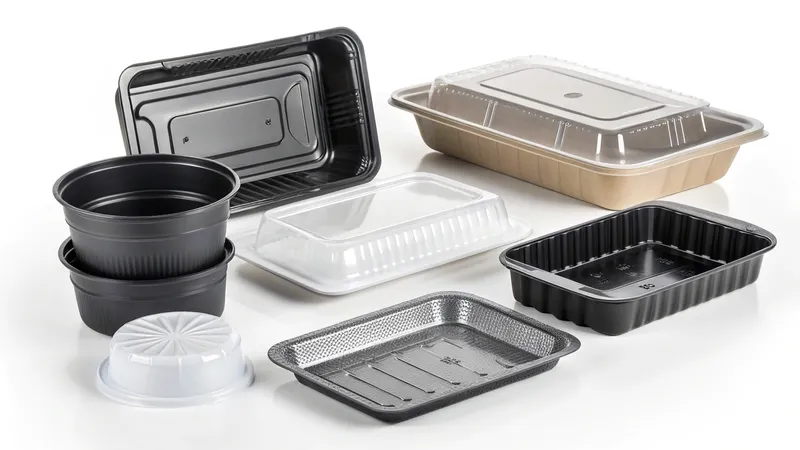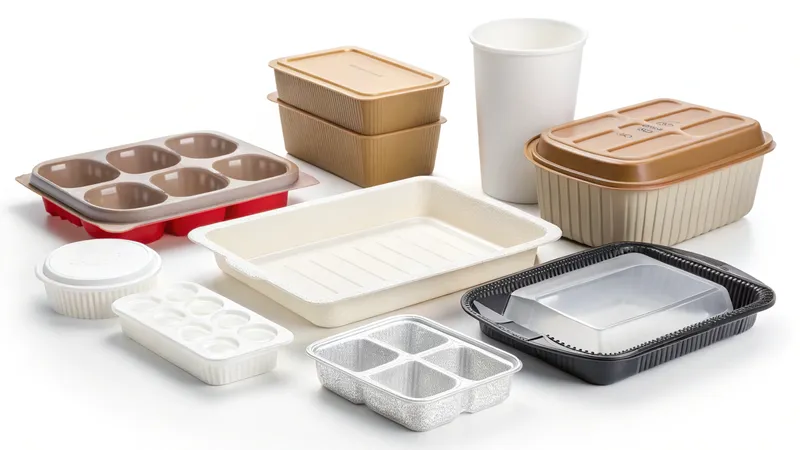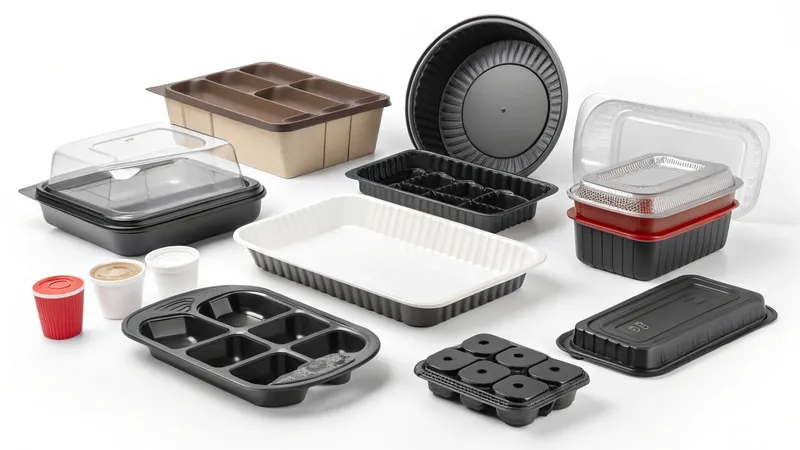Thermoforming is a manufacturing process that offers significant cost advantages, making it a popular choice for producing a wide range of plastic products. But what exactly makes thermoforming so cheap? In this blog post, we’ll explore the key factors that contribute to the cost-effectiveness of thermoforming, from low tooling costs1 to material efficiency and quick production setup.
Key Points
-
Thermoforming is cost-effective2 due to low tooling costs, material efficiency, and quick production setup.
-
It excels in moderate production volumes and large parts, with the added benefit of recycling excess material.
-
Compared to injection molding, thermoforming offers lower costs for prototypes3 and large components.
Thermoforming heats plastic sheets and molds them into shapes using vacuum or pressure, offering low-cost production for moderate volumes and large parts due to simple tooling and material efficiency.
Understanding why thermoforming is cheap can help you decide if it’s the right manufacturing process for your needs. Let’s dive into the details to see how its simplicity and versatility make it an economical choice.
Thermoforming is only suitable for small parts.False
Thermoforming can handle large parts, such as automotive panels, at a lower cost than many alternatives.
Thermoforming reduces material waste.True
Excess material from the process can often be recycled, minimizing waste and reducing costs.
- 1. What Makes Thermoforming Cost-Effective?
- 2. What are the Common Materials Used in Thermoforming?
- 3. What are the Steps in the Thermoforming Process?
- 4. What Factors Influence the Cost of Thermoforming?
- 5. What are the Applications of Thermoforming?
- 6. How Does Thermoforming Compare to Other Manufacturing Processes?
- 7. Conclusion
What Makes Thermoforming Cost-Effective?
Thermoforming involves heating a plastic sheet until it’s pliable, forming it over a mold using vacuum, pressure, or mechanical force, and then trimming it to create the final product. This process is inherently cost-effective for several reasons:

-
Low Tooling Costs4: Unlike injection molding, which requires expensive, complex molds, thermoforming uses simpler, less costly molds. The lower pressure involved means molds don’t need to be as robust.
-
Material Efficiency5: Thermoforming uses thermoplastic sheets, and excess material can often be recycled, reducing waste and material costs.

-
Quick Production Setup6: The straightforward process allows for faster setup and production, ideal for moderate volumes (250–5000 parts per year).
-
Versatility for Large Parts: Thermoforming can produce large parts economically, making it perfect for applications like automotive panels or appliance components.
| Cost Factor | Benefit |
|---|---|
| Tooling Costs | Simpler, cheaper molds compared to injection molding |
| Material Efficiency | Excess material can be recycled, reducing waste |
| Production Setup | Quick and straightforward, ideal for moderate volumes |
| Part Size | Economical for large parts up to 84" x 108" |
What are the Common Materials Used in Thermoforming?
The materials used in thermoforming7 play a big role in its cost-effectiveness8. Here are some common thermoplastics and how they contribute:
| Material | Key Properties | Typical Applications | Cost Considerations |
|---|---|---|---|
| ABS | Durable, impact-resistant | Automotive parts, consumer goods | Slightly higher cost, but durable |
| PET | Clear, recyclable | Packaging, food containers | Ideal for visibility and sustainability |
| PVC | Flexible, chemical-resistant | Medical devices, industrial parts | Requires careful handling |
| PS | Low cost, easy to form | Disposable items, food packaging | Cheapest option for disposables |
| PP | Chemical-resistant, fatigue-resistant | Industrial parts, automotive | Balances cost and performance |
ABS is the cheapest material used in thermoforming.False
While ABS is cost-effective for durable parts, PS is generally cheaper for disposable items.
Material selection in thermoforming impacts both cost and application suitability.True
Choosing the right material ensures optimal performance and cost efficiency for the intended use.
Learn more about thermoplastic properties to see how they influence thermoforming costs.
What are the Steps in the Thermoforming Process?
The thermoforming process9 is simple and designed for cost efficiency. Here’s how it works:

-
Heating: The plastic sheet is heated to its forming temperature using basic heating elements, keeping energy costs low.
-
Forming: The heated sheet is shaped over a mold using vacuum, pressure, or mechanical force—simple equipment keeps operational costs down.

-
Cooling: The part cools in the mold, avoiding the need for separate cooling systems.
-
Trimming: Excess material is trimmed off, and the part is finished. Recyclable trimmings further cut costs.
| Process Step | Cost-Saving Feature |
|---|---|
| Heating | Quick and energy-efficient |
| Forming | Simple equipment, low operational costs |
| Cooling | Integrated with molding, no extra systems |
| Trimming | Automated and recyclable excess material |
Thermoforming requires complex cooling systems.False
Cooling is integrated into the molding process, simplifying operations and reducing costs.
The trimming step in thermoforming contributes to material efficiency.True
Excess material can be recycled, minimizing waste and lowering material costs.
Check out this guide to thermoforming for a deeper dive into the process.
What Factors Influence the Cost of Thermoforming?
Several factors determine how cost-effective thermoforming can be:

-
Tooling Costs10: Thermoforming molds are cheaper than injection molds, especially for large parts.
-
Production Volume11: It’s most economical for moderate runs (250–5000 parts/year).
-
Material Selection12: The right material balances cost with performance needs.
| Factor | Impact on Cost |
|---|---|
| Tooling Costs | Lower than injection molding, especially for large parts |
| Production Volume | Optimal for moderate volumes |
| Material Selection | Varies based on application needs |
Thermoforming is unsuitable for large production volumes.True
For very high volumes, processes like injection molding may be more economical due to economies of scale.
Tooling costs in thermoforming are negligible.False
While lower than other methods, tooling costs still exist and should be considered in project budgets.
What are the Applications of Thermoforming?
Thermoforming shines in industries where cost and efficiency13 are key:

-
Packaging: Food containers, blister packs, and trays benefit from low cost and quick production.
-
Automotive: Large parts like interior panels and dashboards are made economically.
-
Consumer Goods: Toys and electronics housings are ideal for prototyping or short runs.
-
Medical: Device packaging14 and trays meet sterility needs without high costs.
| Industry | Typical Products | Cost Benefits |
|---|---|---|
| Packaging | Food containers, blister packs | Low cost, quick production |
| Automotive | Interior panels, dashboards | Economical for large parts |
| Consumer Goods | Toys, electronics housings | Ideal for prototypes and short runs |
| Medical | Device packaging, trays | Meets sterility requirements cheaply |
Thermoforming is only used for disposable products.False
It’s also used for durable goods like automotive parts and medical devices.
Thermoforming can produce parts with the same precision as injection molding.False
It’s generally less precise but sufficient for many applications where high detail isn’t critical.
How Does Thermoforming Compare to Other Manufacturing Processes?
Compared to injection molding, thermoforming offers distinct advantages:

-
Lower Tooling Costs15: Simpler molds mean lower upfront expenses.
-
Faster Setup16: Great for quick turnarounds on prototypes or moderate volumes.
-
Material Recycling17: Excess material can be reused, cutting waste.
However, injection molding may be better for high volumes or precision parts despite higher initial costs.
| Comparison Aspect | Thermoforming | Injection Molding |
|---|---|---|
| Tooling Costs | Lower | Higher |
| Setup Time | Faster | Slower |
| Precision | Moderate | High |
| Material Recycling | Possible | Limited |
| Best for | Moderate volumes, large parts | High volumes, precise parts |
Thermoforming is always cheaper than injection molding.False
For very high volumes, injection molding may offer lower per-part costs despite higher tooling expenses.
Thermoforming’s ability to recycle material makes it more sustainable.True
Recycling excess material reduces waste and aligns with sustainability goals.
Explore thermoforming vs. injection molding for a detailed comparison.
Conclusion
Thermoforming stands out as a cheap manufacturing option thanks to its low tooling costs, material efficiency, quick production setup, and versatility for moderate volumes and large parts. By understanding these cost-saving factors, manufacturers can choose thermoforming to optimize their production strategies and achieve significant savings. Whether you’re making packaging, automotive components, or consumer goods, thermoforming offers a versatile and economical solution.
-
Learn about the significance of low tooling costs in thermoforming and how it can save you money. ↩
-
Explore how thermoforming's cost-effectiveness can benefit your production needs and improve your bottom line. ↩
-
This link will explain how thermoforming can save money on prototype production, making it a smart choice for manufacturers. ↩
-
Understanding low tooling costs can help businesses save on production expenses and improve profitability. ↩
-
Exploring material efficiency can reveal ways to minimize waste and enhance sustainability in manufacturing. ↩
-
Learning about quick production setup can help manufacturers streamline operations and respond faster to market demands. ↩
-
Understanding thermoforming can help you grasp its applications and benefits in various industries. ↩
-
Learning about cost-effectiveness in material selection can improve decision-making in manufacturing processes. ↩
-
Understanding the thermoforming process can help you appreciate its cost efficiency and applications in manufacturing. ↩
-
Understanding tooling costs can help you appreciate the economic benefits of thermoforming over other methods. ↩
-
Exploring production volume insights can guide your decision-making for efficient manufacturing processes. ↩
-
Learning about material selection can enhance your knowledge of optimizing performance and cost in thermoforming applications. ↩
-
Understanding the balance of cost and efficiency can lead to better decision-making in manufacturing strategies. ↩
-
Stay updated on innovative packaging solutions that can improve product delivery and sustainability. ↩
-
Understanding the benefits of lower tooling costs can help businesses save money and improve efficiency in production. ↩
-
Learning about the advantages of faster setup can enhance production efficiency and reduce time-to-market for products. ↩
-
Exploring material recycling in thermoforming can reveal sustainable practices that reduce waste and promote eco-friendliness. ↩









